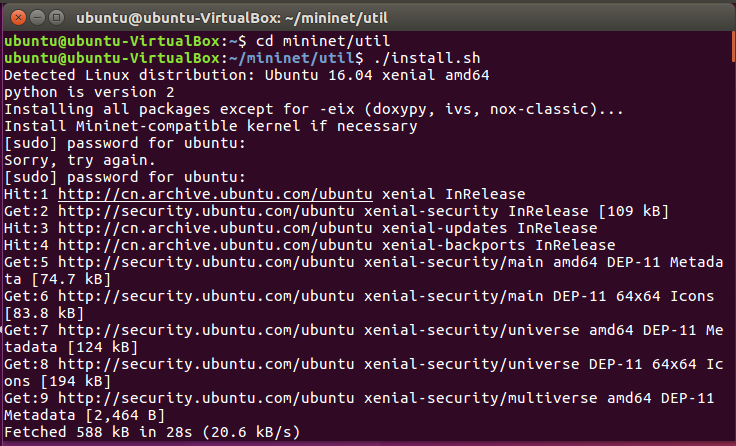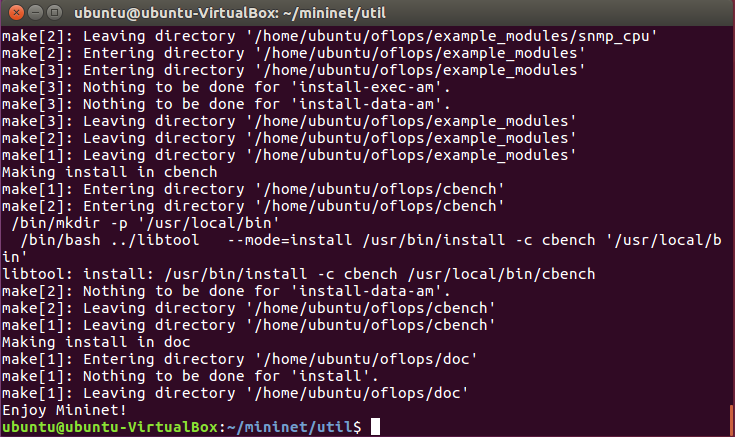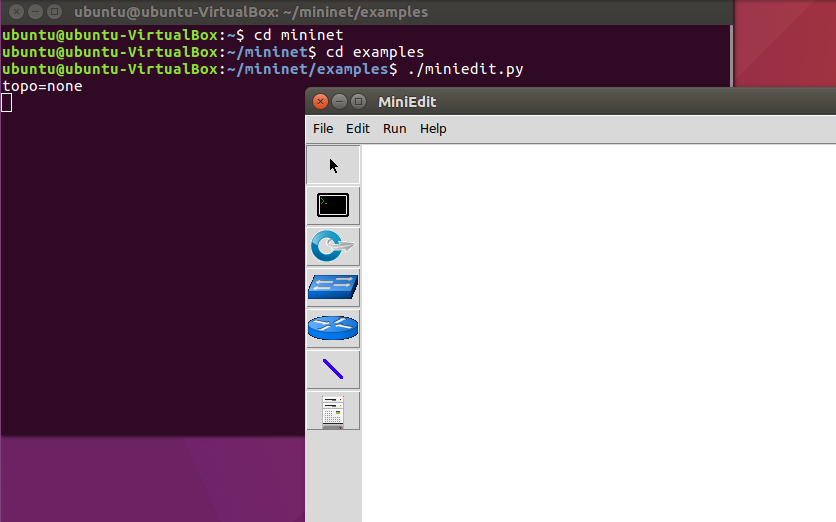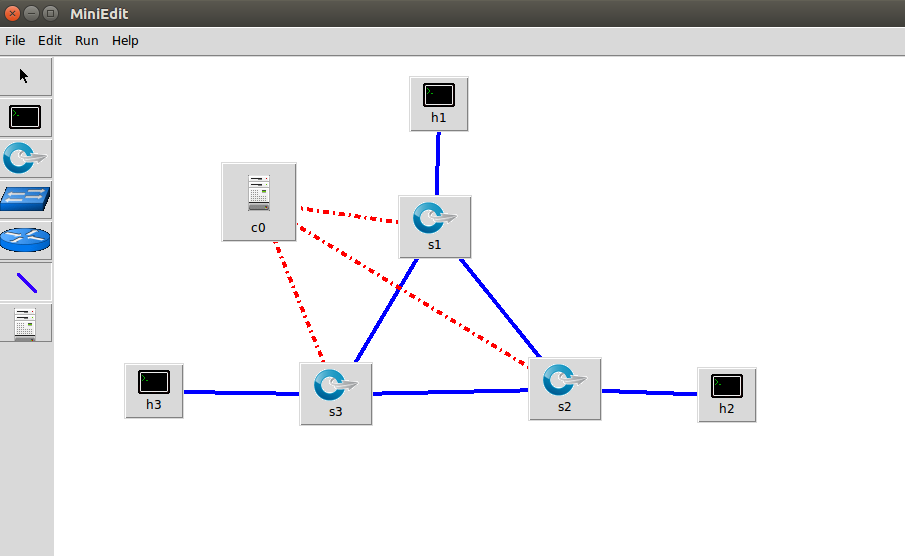1. 安装轻量级网络仿真工具Mininet
-
使用
git clone https://github.com/mininet/mininet.git命令克隆安装包 -
安装mininet

-
安装成功

-
建立最小的拓扑结构,并使用net命令查看

2. 用字符命令搭建如下拓扑,要求写出命令
-
sudo mn --topo=linear,3

-
sudo mn --topo=tree,depth=2,fanout=3

3. 利用可视化工具搭建如下拓扑,并要求支持OpenFlow 1.0 1.1 1.2 1.3,设置h1(10.0.0.10)、h2(10.0.0.11)、h3(10.0.0.12),拓扑搭建完成后使用命令验证主机ip,查看拓扑端口连接情况。
- 搭建拓扑


-
设置




-
验证主机ip


4. 利用Python脚本完成如下图所示的一个Fat-tree型的拓扑(交换机和主机名需与图中一致,即s1s6,h1h8,并且链路正确,请给出Mininet相关截图)

- 代码
#!/user/bin/python
# create topo
"""Custom topology example
Adding the 'topos' dict with a key/value pair to generate our newly defined
topology enables one to pass in '--topo=mytopo' from the command line.
"""
from mininet.topo import Topo
from mininet.net import Mininet
from mininet.node import RemoteController,CPULimitedHost
from mininet.link import TCLink
from mininet.util import dumpNodeConnections
class MyTopo(Topo):
"Simple topology example"
def __init__(self):
"Create custom topo"
# Initialize topology
Topo.__init__(self)
L1=2
L2=L1*2
L3=L2
c=[]
a=[]
# add core ovs
for i in range(L1):
sw = self.addSwitch('s{}'.format(i+1))
c.append(sw)
# add aggregation ovs
for i in range(L2):
sw = self.addSwitch('s{}'.format(L1+i+1))
a.append(sw)
#add links between core and aggregation ovs
for i in range(L1):
sw1 = c[i]
for sw2 in a[i/2::L1/2]:
self.addLink(sw2,sw1)
#add hosts and its links with edge ovs
count=1
for sw1 in a:
for i in range(2):
host = self.addHost('h{}'.format(count))
self.addLink(sw1,host)
count += 1
topos={'mytopo':(lambda:MyTopo())}



